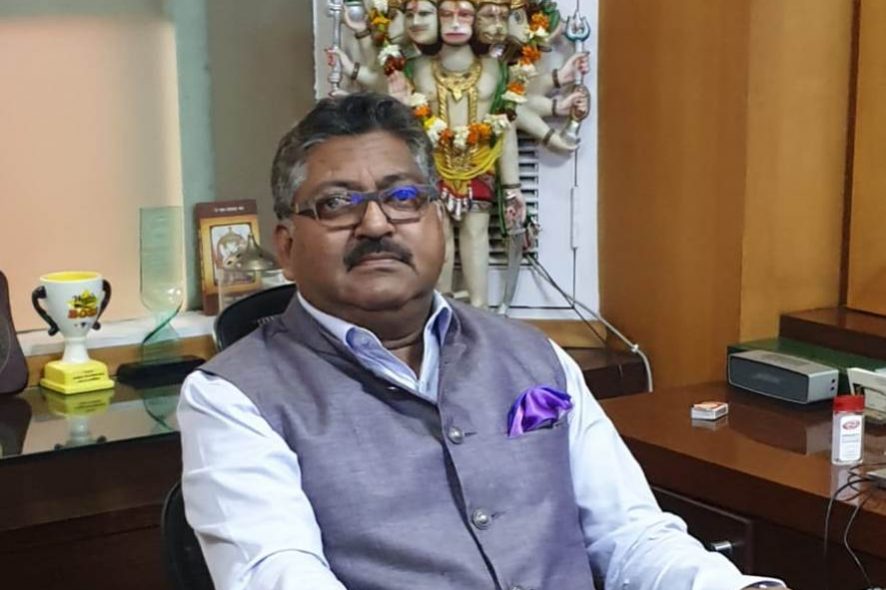Mr. Atul Sharma is a successful and pragmatic lawyer having experience of more than a decade in the legal field. After graduating from Meerut University in 1983, he started his individual criminal practice by the name of Atul Sharma & Associates which he successfully grew and developed over the course of time. His area of specializations includes Arbitration, Civil Litigation, Insolvency& Bankruptcy laws, amongst others. Keeping up with the growing and evolving market, he expanded his operations by establishing ASA Legal Services LLP, a full-service law firm with operations in cities like New Delhi, Mumbai, Bengaluru and Ahmedabad. With a pan-India presence, ASA Legal has gone on to cement its status as one of the reputed law firms of the country. Mr. Sharma advises various clients ranging from corporate houses, Banks, Financial Institutions, Public Sector Undertakings, etc. and also has experience in advising and working in issues relating to real estate financing and restructuring.
Mr. Atul Sharma will be taking us through his legal career, and will be sharing his thoughts on the upcoming field of Insolvency & Bankruptcy laws in India, the challenges one comes across in running their own law firm and how can one build upon it
1.Hello, Sir! It is indeed an honour and pleasure to have you with us. To begin with, please tell us about yourself, how did you start your journey in the area of law or rather what made you interested in this field?
First, I’d like to sincerely thank you for giving me this coveted chance of sharing my experiences and insights about my, never-ending, journey in this legal profession with your dear readers.
When legal profession was not the choice at all, the last resort for people who didn’t do or opt for anything fruitful lucrative career in life, I decided to pursue it with a firm belief that I’d break the said notion which have stigmatised such a quality profession.
Hailing from a middle-class family, I started my career in the year 1983 after passing out from Meerut University, Uttar Pradesh where the way forward was uncertain and undefined but I steered my journey with the sheer belief that “I’d be the change” instead of being “Subject to a change orchestrated by someone”. I always believe that lawyers have a substantial impact in the betterment of the society in many ways. Two things which I strongly believe have formed my present are my commitment towards my work and believing in myself, which changed the modest beginnings till date
2. You have started your career in 1983. Tell us about how the field has transformed over the years and what the future holds for new generation lawyers.
Prior to the emergence of corporate legal sectors, jobs available to lawyers like me were mostly assisting to practicing advocates and that to without any payment. So, there were only two option either be employed with private or govtsector or practice as independent lawyer. The practice had only two option i.e. civil or criminal.
But from the 1990s when liberalization came in to picture under the Indian economy, demand for lawyers who provided advisory in different practice domains have taken this field to a completely new era of modernization. Now we can see tremendous advancement in the area of law with different practice areas such as Banking & Finance, Mergers & Acquisition, Investment Arbitration, Private Equity & Venture Capital etc.
The establishment of good law schools in India has completely changed the landscape of Indian legal system, bar and bench both have modernized themselves. And I believe that future of new generations lawyers will be more technologically advanced, each lawyer will have their own specialized practice domain not like it used to be in early 90s.
3. It has been more than a decade since your commencement in this field. How do you still manage to put forth so much energy and enthusiasm in the field when lot of youngsters in this profession are struggling to cope up even for couple of years?
The key to success in this field is patience and perseverance: patience to learn the craft, patience to start from zero and go up the ladder eventually, patience to imbibe the nuances of the profession while being at the nascent steps of your career, persevering while the odds are heavily stacked against you because the tides that rise up to your height now will ebb away eventually and you’d be standing tall.
No one is born big and become a brand. Everyone has passed through the litmus of time and has to carve a niche for himself. Everyone must carry its horizon which sets the bench mark for rest.
I believe unless one dreams, he cannot achieve it. So, my job is to have a dream and make it possible. Youngster are my source of energy, they challenge me in every spear of life, professional, social &emotional.Their rough quest to achieve, survive and quick strides to make big irrespective of all odds is what challenges me more and more. Though I may have suggestion for them to have baby steps today which would eventually make them stand as an adult tomorrow.
I have left nothing unattended in my life. Though I’m not very organized, but my zeal to leave nothing unattended, makes everything possibly correct and organized.
4. From Atul sharma to Atul Sharma & Associates and presently, ASA Legal, do tell us how it all came about. Noteworthy, it was 23 years in Atul Sharma & Atul Sharma & Associates and 12 years already in ASA Legal. Do tell us about the firm and its practice areas.
I started my carrier in 1983 from Patiala House District Court, as a criminal lawyer. I was assisting to few senior lawyers in trials and bail matters. With a short span of one year I was able to establish my small practice in criminal field. However, very soon realised that my interest lies somewhere else, so stared trying on the civil side, MACT, Matrimonial, Banking and so forth other commercial practice areas. Especially, practice in banking lawsgave lot of knowledge of litigation and corporate work. And this was the turning point where Atul Sharma turned into Atul Sharma & Associates representing practically all the Banks, Financial Institutions with their advisory as well as litigation requirements.
With the increase in the work as well as number of lawyers associated, Atul Sharma & Associates become ASA Legal, a full service law firm having its operations in India with offices located at New Delhi, Mumbai, Bengaluru and Ahmedabad having two senior partners, eight partners and additional lawyer’s at different levels who look after the clients and their requirement, most of the lawyers at ASA Legal are home grown talents. But I would specially mention Mr. Anil Kumar Sharma and Mr. M.L. Rajora, two senior partners in ASA Legal who have supported and helped me in building this organization from the grass root level.
The Firm is a well-equipped organization comprising of highly qualified and well-experienced legal professionals and consultants trained to deliver/provide necessary and requisite legal support as per the requirement of the clients, both domestic and foreign.
The Firm represents clients across a spectrum of sectors comprising of government and non-governmental organizations, international entities, multinationals, Indian and foreign corporate bodies, banks, financial institutions and individuals in an array of matters. Our main areas of focus are litigation, dispute resolution, arbitration, insolvency and bankruptcy, corporate law, banking and finance, employment, labour and industrial law, real estate, corporate restructuring and due diligences.
5. Bankruptcy and Insolvency, recovery related matters is one of the core areas you and the firm specializes at. What are your viewsabout the Insolvency and Bankruptcy Code, 2016 (“I&B Code”)keeping in view the present market scenario?
Around a year back I was going through the World Bank’s report on how other countries are handling their insolvencies, while reading the report I found that global ranking of India under the insolvency regime is above 100.
Before the I&B Code came into application the whole procedure of insolvency and liquidation has dependably been in the hands of the shareholders and debt holders. By and large, when the whole procedure was finished, the benefits were dissolved with very small portion left for the creditors. Or on the other hand the promoters took an interest in the offering procedure and reacquired similar resources however with a very steep haircut, leaving the lenders vulnerable.
The I&BCode has been made for a noteworthy power move from the hands of the shareholders, management and the promoters to the lenders. Presently a
creditor with a default of Rs 1 lakh, can take the organization into liquidation. But still the Code has many grey areas which from time to time will be refined by absorbing the nature of Indian economy sector wise.
There is no doubt about the phenomena I&B Code is doing. But at the same time, I must say, that the I&B Code as on date is a double-edged sword. With the ever-dynamic approaches, every day, there is a new interpretation a new approach. For certain businesses it’s a boon, whereas for others it appears to be a cause for failing business models. We are still experimenting; indeed, we have grown and have grown for good, but the experiment is on. One must understand, that insolvency is an underlying state and merely with none payment of pending amounts that state cannot be reached, the underlying condition of reaching insolvency is no-capacity to pay and not the no-desire to pay. For the no-desire situation I believe, the right forums are the civil ones, whereas for no-capacity it is the NCLT as Adjudicating Authority.
One must understand the difference, if that is achieved, I believe the object of the code will be achieved. We cannot equate horses and mules, similarly we cannot equate a Solvent Financial Figures with the none-solvent ones only on the basis, that there is a delay in the payment or there is no desire to pay, a very thin line difference indeed.
I would again say as of now I&B Code is in its initial phase, we are still experimenting, the results will become better in the coming time, especially, when the application would be made in right direction.
6. What were the challenges faced while building up your own law firm as it stands today?
Nothing delivers without pain. The journey with new challenges, failures and pain has been wonderful. If I see back in time, I feel happy for all my failures, unsuccessful attempts because they lay the foundation stone of success.
Building up your own law firm requires lots of perseverance, handling the client, convincing the clients, turnaround time of ongoing assignment, infrastructure and most important thing flexibility of your family and employee towards you.
The biggest challenge is to give commercially viable solution to your client and to implement it to the satisfaction of the client.
7. Any advice for our readers?
Simple advice for the readers would be to stick to this one liner which I, personally, have always found very valuable in this profession, i.e. Rome wasn’t built in a day. The simple mantra of being willing to start from zero is nothing but learning the tricks of this trade now because all the knowledge that you imbibe today will help you rake up the sums later. Your tangible dreams can only be fulfilled if your intangible knowledge is strengthened, polished and founded corrected.
I am firm believer of these line by poet Dushyant Kumar “Kon kahta hai ki asman me ched nahi ho sakte, ek bar pather uchalke to dekho”







